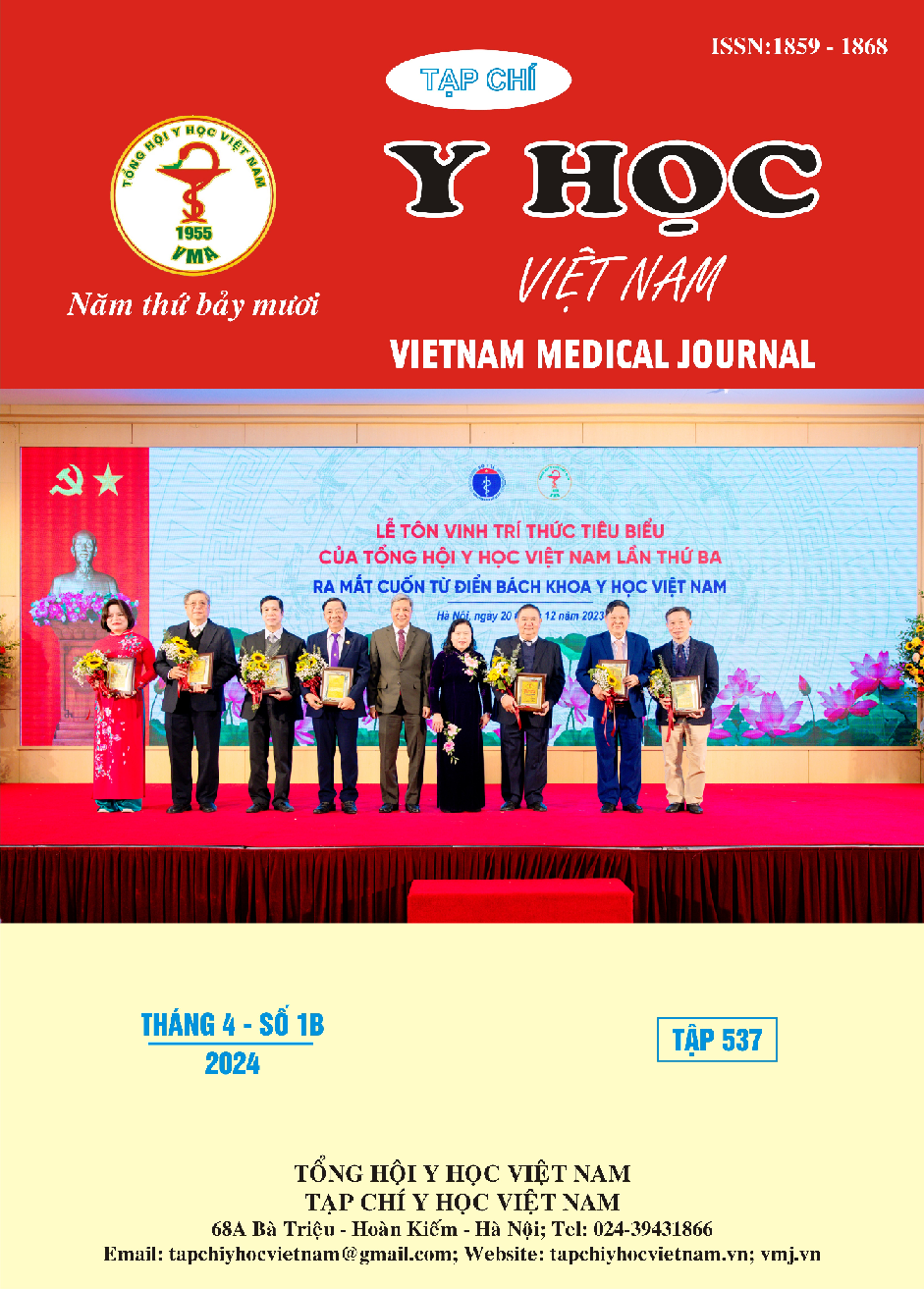PHẪU THUẬT TIM KẾT HỢP CẦU NỐI ĐỘNG MẠCH CHỦ - ĐỘNG MẠCH ĐÙI HAI BÊN: KẾT QUẢ NGẮN HẠN
Nội dung chính của bài viết
Tóm tắt
Đặt vấn đề: bệnh van tim hoặc mạch vành kết hợp với bệnh mạch máu chủ-chậu tuy ít gặp nhưng rất nặng. Chúng tôi báo cáo kết quả ngắn hạn của 5 trường hợp phẫu thuật một thì cho bệnh tim và cầu nối ngoài giải phẫu động mạch chủ lên-động mạch đùi hai bên. Phương pháp nghiên cứu: hồi cứu mô tả 5 trường hợp phẫu thuật tim kết hợp cầu nối động mạch chủ lên-động mạch đùi hai bên một thì. Kết quả: 2 trường hợp thay van và 3 trường hợp bắc cầu mạch vành không tuần hoàn ngoài cơ thể đi kèm cầu nối động mạch chủ lên -hai động mạch đùi qua đường hầm trước phúc mạc. Ống ghép Dacron chữ Y với kích cỡ 14/7 được sử dụng. Trước phẫu thuật cả 4 đều ở phân loại Fontaine giai đoạn 4 và TASC II 3C/D. Chụp mạch máu cản quang thấy tắc hoàn toàn động mạch chủ-chậu. Không có tử vong và biến chứng trong thời kỳ hậu phẫu. Theo dõi đến 6 tháng và chụp lại CT cho thấy cầu nối thông tốt, bệnh nhân hết đau chi dưới và đi lại bình thường. Kết luận: Cầu nối ngoài giải phẫu động mạch chủ lên-động mạch đùi hai bên là một giải pháp hữu hiệu, dễ thực hiện và an toàn trong các trường hợp cần phẫu thuật tim cùng lúc với bệnh động mạch chủ-chậu cấp tính.
Chi tiết bài viết
Từ khóa
cầu nối động mạch chủ lên-hai động mạch đùi; bệnh động mạch chủ-chậu; bắc cầu động mạch vành
Tài liệu tham khảo
2. Chiu KW, Davies RS, Nightingale PG, Bradbury AW, Adam DJ. Review of direct anatomical open surgical management of atherosclerotic aorto-iliac occlusive disease. Eur J Vasc Endovasc Surg. 2010 Apr; 39(4):460-71.
3. Sharma G, Scully RE, Shah SK, Madenci AL, Arnaoutakis DJ, Menard MT, Ozaki CK, Belkin M. Thirty-year trends in aortofemoral bypass for aortoiliac occlusive disease. J Vasc Surg. 2018 Dec;68(6):1796-1804.e2.
4. Indes JE, Mandawat A, Tuggle CT, Muhs B, Sosa JA. Endovascular procedures for aorto-iliac occlusive disease are associated with superior short-term clinical and economic outcomes compared with open surgery in the inpatient population. J Vasc Surg. 2010 Nov;52(5):1173-9, 1179.e1.
5. Baird RJ, Ropchan GV, Oates TK, Weisel RD, and Provan JL. Ascending aorta to bifemoral bypass-a ventral aorta. J Vasc Surg 1986; 3: 405-l0.
6. Jebara VA, Fabiani JN, Acar C, Chardigny C, Julia P, Carpentier A. Combined Coronary and Femoral Revascularization Using an Ascending Aorta to Bifemoral Bypass. Arch Surg. 1994;129: 275-279.
7. Bosse C, Ramadan R, Fabre D, and Guihaire J. Cardiac surgery combined with bypass from the ascending aorta to the bilateral femoral arteries for severe aorto-iliac occlusion: A case series. J Thorac Cardiovasc Surg 2018;155:1574-7.
8. Suzer K, Omay O, Ozker E, Indelen C and Gumus B. Coronary artery bypass grafting and concomitant descending aorta-to-bifemoral artery bypass via sternotomy. Cardiovascular J. Africa 2009; 20(5); https://hdl.handle.net/10520/ EJC23285.


